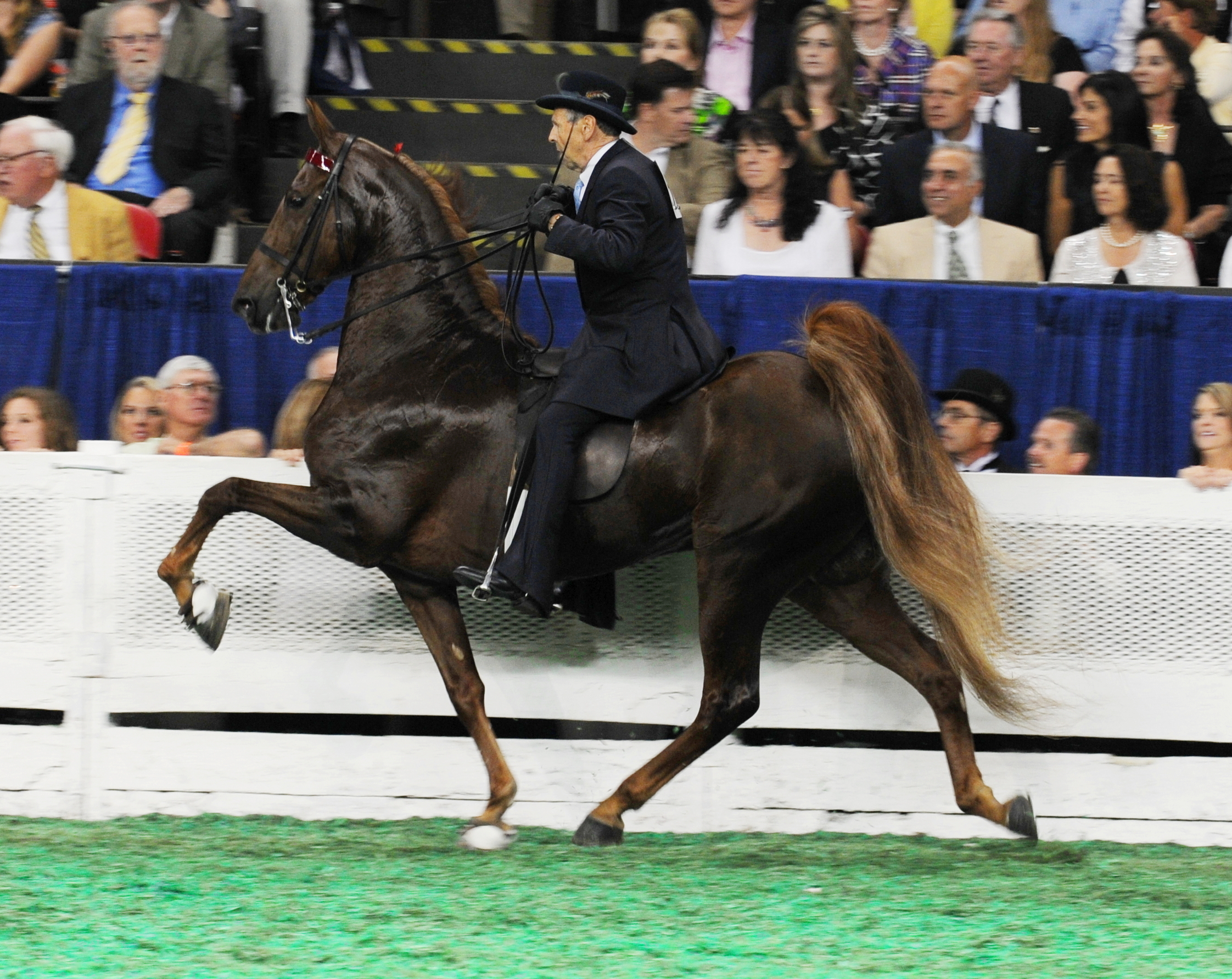Five-Gaited on:
[Wikipedia]
[Google]
[Amazon]
 Five-gaited horses are notable for their ability to perform five distinct
Five-gaited horses are notable for their ability to perform five distinct
 Five-gaited horses are notable for their ability to perform five distinct
Five-gaited horses are notable for their ability to perform five distinct horse gait
Horses can use various gaits (patterns of leg movement) during Terrestrial locomotion, locomotion across solid ground, either naturally or as a result of specialized horse training, training by humans.Ensminger, M. E. ''Horses and Horsemanship'' ...
s instead of simply the three gaits, walk, trot and canter or gallop common to most horses. Individual animals with this ability are often seen in the American Saddlebred
The American Saddlebred is a horse breed from the United States. Descended from riding-type horses bred at the time of the American Revolution, the American Saddlebred includes the Narragansett Pacer, Canadian Pacer, Morgan horse, Morgan and ...
horse breed, though the Icelandic horse
The Icelandic horse ( ), or Icelandic, is a Horse breed, breed of horse developed in Iceland. Although the horses are smaller (at times pony-sized) than other breeds, most Breed registry, registries for the Icelandic refer to it as a horse. Th ...
also has five-gaited individuals, though with a different set of gaits than the Saddlebred.
The ability to perform an ambling gait or to pace appears to be due to a specific genetic mutation. Some horses are able to both trot and perform an ambling gait, but many can only do one or the other, thus five-gaited ability is not particularly common in the horse world.
In the American Saddlebred and related breeds, the five gaits performed are the walk, trot, canter, and two ambling gaits: the rack, a fast, lateral, four-beat gait that is synchronous— "each foot meets the ground at equal, separate intervals"; and a "slow gait", a slower, smooth collected four-beat gait that is asynchronous — "the lateral front and hind feet start almost together but the hind foot contacts the ground slightly before its lateral forefoot." Another name for the slow gait is the stepping pace. The USEF is clear that the slow gait is not merely a slow version of the rack, but the primary difference between the two is the slight hesitation between the second and third beats of the slow gait. A five-gaited horse might also perform the fox trot rather than the stepping pace.
In the Icelandic horse, the five gaits are the walk, trot, canter, ''tölt'' and the ''skeið'', or flying pace. The ''tölt'' is a lateral four-beat gait compared to the rack of the Saddlebred, but in style of performance sometimes more closely resembles the largo of the Paso Fino
The Paso Fino is a naturally gaited light horse breed dating back to horses imported to the Caribbean from Spain. ''Pasos'' are prized for their smooth, natural, four-beat, lateral ambling gait; they are used in many disciplines, but are especi ...
, or the running walk of the Tennessee Walking Horse
The Tennessee Walking Horse or Tennessee Walker is a horse breed, breed of gaited horse known for its unique four-beat running-walk and flashy movement. It was originally Horse breeding, developed as a riding horse on farms and plantations in t ...
. Like all lateral ambling gaits, the footfall pattern is the same as the walk (left hind, left front, right hind, right front), but differs from the walk in that it can be performed at a range of speeds, from the speed of a typical fast walk up to the speed of a normal canter. Some Icelandic horses prefer to tölt, while others prefer to trot. The flying pace is a two-beat lateral gait, with a moment of suspension between the two sets of footfalls. At racing speeds, horses can perform the flying pace at speeds close to 30 mph. Icelandics that can perform the ''tölt'' but not the flying pace are called "four-gaited."
Other gaited horse breeds may be able to perform five gaits, and individual horses of breeds not normally noted for possessing ambling gaits may also do so. Examples of these include the part-Saddlebred National Show Horse
The National Show Horse originated as a part-Arabian cross between an American Saddlebred and an Arabian horse. It is now established as a separate breed, since the founding of a breed registry in August 1981. Registered animals today may be ...
, the Arabian horse
The Arabian or Arab horse ( , DIN 31635, DMG ''al-ḥiṣān al-ʿarabī'') is a horse breed, breed of horse with historic roots on the Arabian Peninsula. With a distinctive head shape and high tail carriage, the Arabian is one of the most easi ...
, the Morgan, and the Morab.
Notes
References
{{reflist Horse gaits Saddlebreds